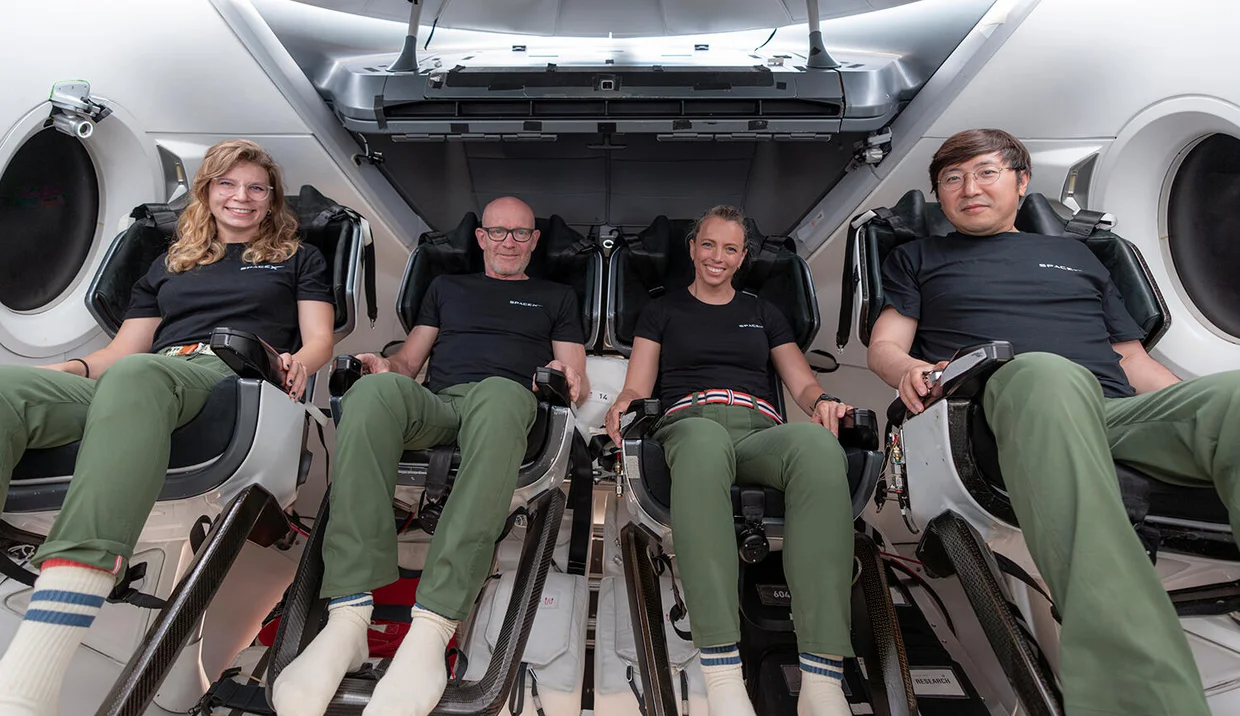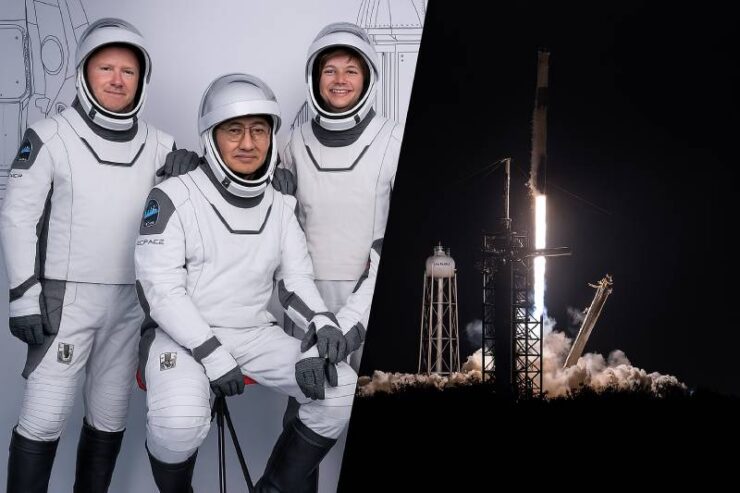A polar orbit once reserved for military satellites is now the route of a privately funded civilian space mission led by Chun Wang, the Chinese-born crypto entrepreneur and founder of Bitcoin mining pool F2Pool. Wang bankrolled SpaceX’s Fram2 mission, the first human spaceflight to traverse over both the North and South poles.
Launched at 9:46 p.m. EDT on March 31 from Kennedy Space Center’s pad 39A, the SpaceX Crew Dragon “Resilience” capsule carried Wang and three other private astronauts: Norwegian cinematographer Jannicke Mikkelsen, German roboticist Rabea Rogge, and Australian Arctic adventurer Eric Philips.
The capsule reached a 273-mile-high orbit less than 10 minutes after liftoff, embarking on a three-day and 14-hour journey expected to complete 55 polar passes before splashdown in the Pacific Ocean.
The flight marks the third fully private, crewed mission by SpaceX. Rogge emphasized that the spacecraft’s self-sufficiency marked a major turning point for space travel. With none of the Fram2 crew members being licensed pilots, the mission relied entirely on the Crew Dragon’s autonomous systems. She noted that this level of automation could dramatically expand access to space for civilians in the future.
“I think that really spearheads the accessibility to space,” she said.

Wang, who became a Maltese citizen in 2023, founded F2Pool in 2013. Today, the pool accounts for nearly 10% of Bitcoin’s network hashrate. He later launched Stakefish in 2018, an Ethereum staking platform with more than 2,000 validators. Wang said the Fram2 mission continues his quest to “push boundaries,” tracing his past journeys to the North Pole in 2023 and the southern tip of Earth in 2021.
Inspired by entrepreneur Jared Isaacman’s earlier missions, Wang booked the flight through SpaceX and invited fellow explorers he had met during a polar trip. The mission name “Fram2” pays homage to the 19th-century Norwegian ship Fram, which carried Arctic explorers. A piece of the original ship’s teak deck is aboard the Dragon capsule.
The crew will conduct 22 experiments in orbit, including the first X-ray of the human body in space and mushroom cultivation in microgravity. They are equipped with professional cameras, iPads, iPhones, laptops, and a Starlink laser terminal designed to deliver 100 gigabytes per second of data.
Their trajectory — tilted 90 degrees to Earth’s equator — required a rare southbound flight path from Florida, passing over Cuba and Panama. SpaceX modified the Crew Dragon’s software to ensure emergency safety protocols over populated areas.
Mikkelsen, who will document the mission’s visuals, noted the public’s involvement in photographing auroras during Fram2’s passes. “We have reached out to 2.2 million auroral citizen scientists,” she said, linking terrestrial data to images captured from orbit.
The mission is scheduled to end with a splashdown off California’s southern coast, marking a pivotal moment for SpaceX’s ambitions in polar orbit tourism and for Chun Wang’s expanding role in the future of private space exploration.





